Related Posts
Design & Ideas
Grout Colours and Their Impact: The Complete Guide to How They Shape Your Space
Halima Bapu
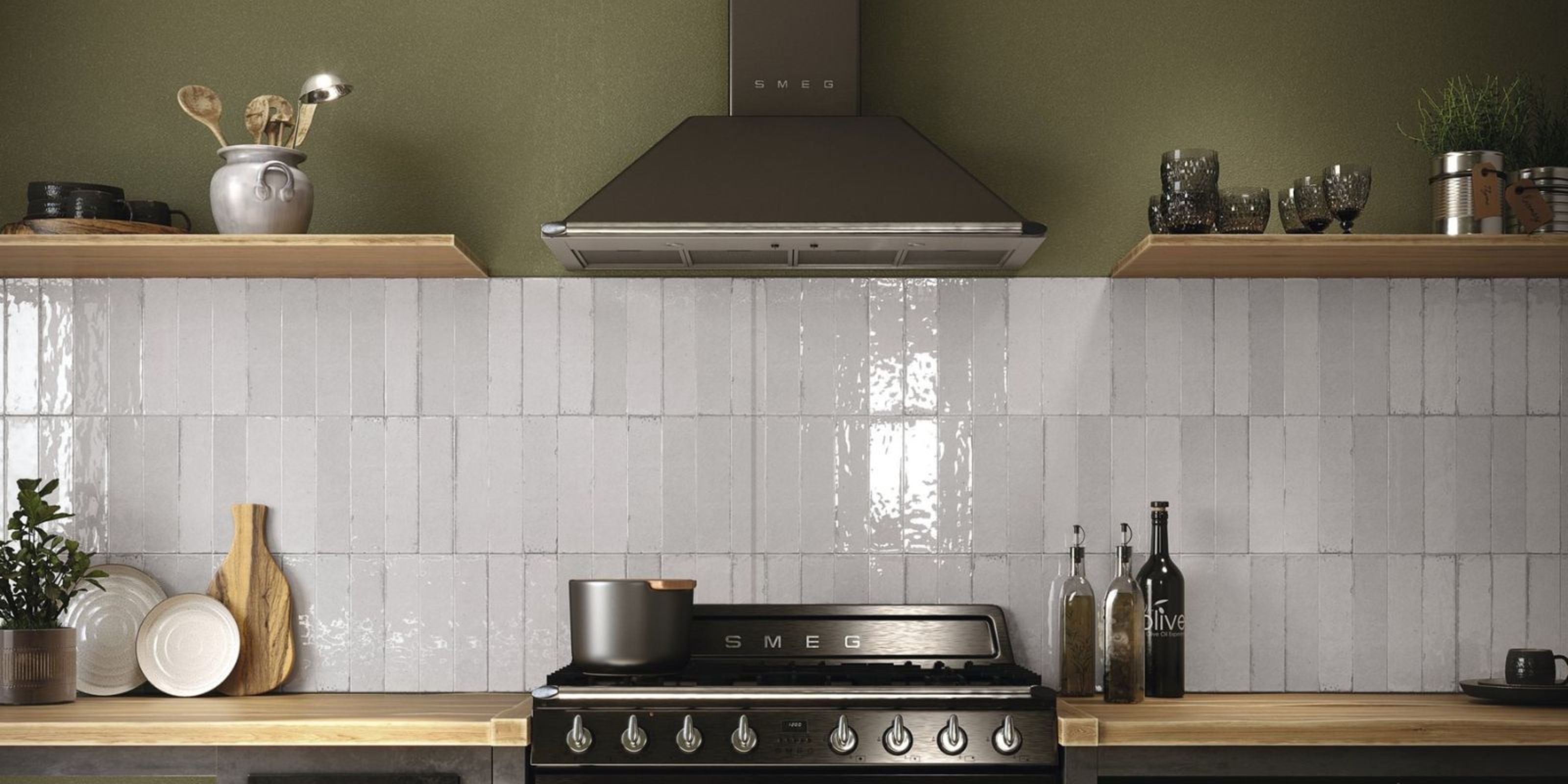
Written by: Halima Bapu
The kitchen and bathroom are two of the most design-sensitive spaces in any home. These rooms don’t just serve practical functions, they are expressions of personal style, wellness, and comfort. At ROCCIA, we understand that colour plays a pivotal role in defining how these rooms feel and function. By thoughtfully coordinating your colour palette with the right tiles and finishes, you can transform a basic room into a timeless sanctuary or a bold design statement.
In this comprehensive guide, we explore the most effective and stylish kitchen and bathroom colour schemes, blending modern aesthetics with colour psychology and material expertise. Whether you prefer soothing neutrals, vibrant accents, or sophisticated contrasts, this guide will help you design with intention and creativity to make your spaces both beautiful and functional.
Colour is more than visual appeal, it influences emotion, space perception, and light distribution. In functional areas like kitchens and bathrooms, colour schemes should balance aesthetics, maintenance, and atmosphere.
Bathroom colour ideas can help you select paint shades and colour schemes that create specific moods or styles, such as tranquillity, relaxation, or on-trend looks.
Tiles play a pivotal role in this equation. From splashbacks to floors and feature walls, the right tile colour and texture can define the entire mood of a room, while also adding practical benefits like durability and ease of cleaning. Incorporating varied textures and finishes in tiles can add depth and interest to the space, making your kitchen or bathroom both beautiful and functional.
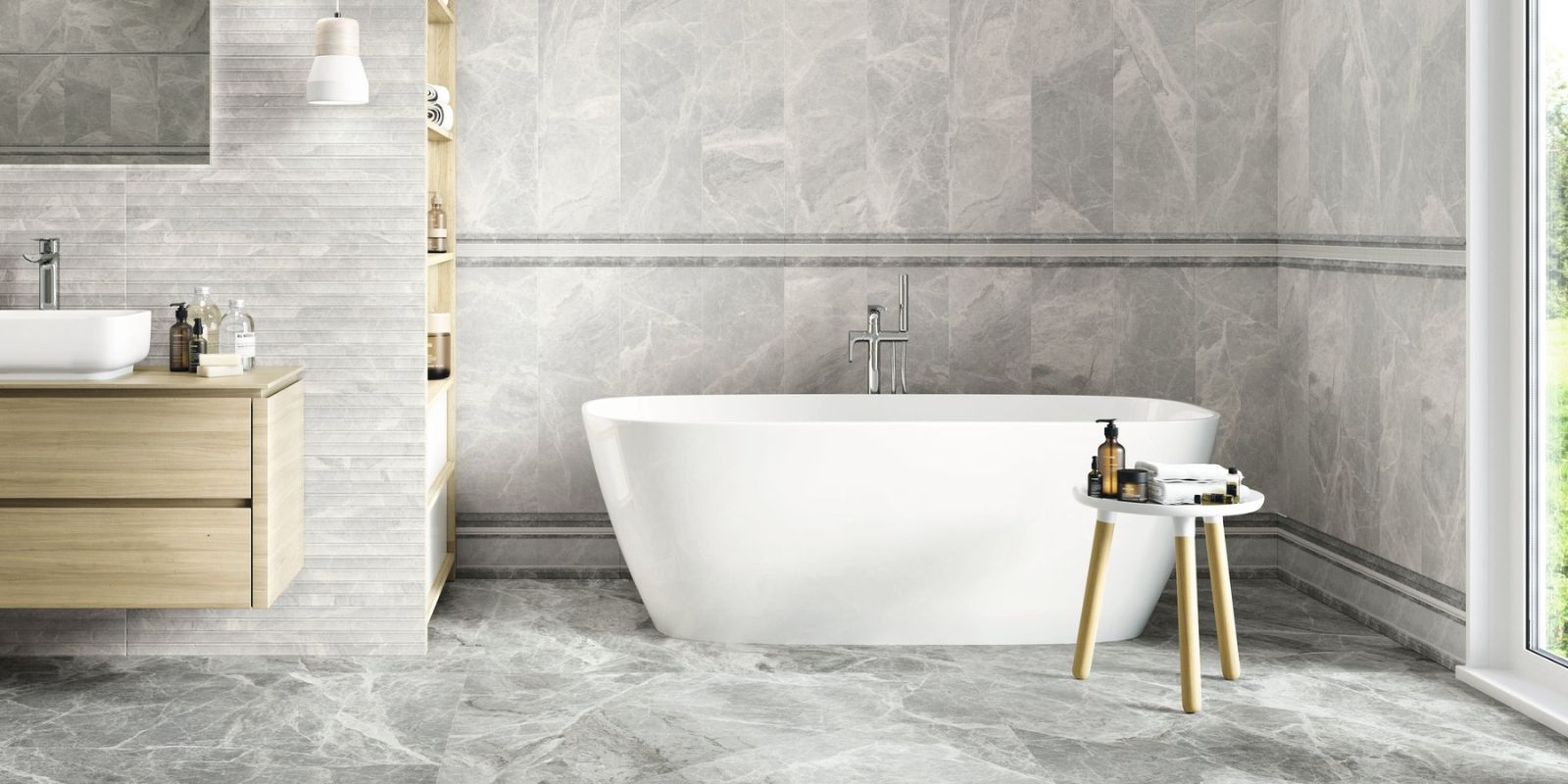
The combination of white and grey is a classic foundation for minimalist, Scandi, or industrial-inspired designs. White tiles reflect light and open up the space, while grey introduces contrast, structure, and cool sophistication. In bathrooms, high-gloss white ceramic wall tiles create a spa-like atmosphere when paired with soft grey stone-effect porcelain.
The combination of white and grey is a classic foundation for minimalist, Scandi, or industrial-inspired designs. White tiles reflect light and open up the space, while grey introduces contrast, structure, and cool sophistication.
In bathrooms, high-gloss white ceramic wall tiles create a spa-like atmosphere when paired with soft grey stone-effect porcelain on the floor. In kitchens, opt for matte grey floor tiles to ground your white cabinetry and balance chrome or stainless steel appliances.
Add depth with textured finishes, such as a split-face grey feature wall or marble-look surfaces with subtle veining. Incorporate lighting strategically, under-cabinet LED strips or hanging pendants, to highlight tonal variations and maintain clarity in the space. These textured elements not only add visual interest but also create a tactile dimension that enriches the overall ambiance. For kitchens, consider textured backsplashes that complement cabinetry finishes, while in bathrooms, textured tiles can serve as stunning focal points behind vanities or within shower enclosures. Additionally, pairing these textures with reflective surfaces like polished chrome or glass can amplify light and make the room feel more spacious. Thoughtful layering of textures and lighting ensures that even a monochrome colour scheme feels dynamic and inviting, elevating the design beyond simple colour coordination.
Pairing blue and sand tones introduces a calming, natural aesthetic reminiscent of beachside living. Soft, desaturated blues paired with warm sandy beiges create a relaxing and balanced space that works beautifully in both kitchens and bathrooms.
In bathrooms, use sky-blue glazed wall tiles to reflect light, and balance them with beige travertine-look floor tiles to ground the scheme. In kitchens, this colour palette pairs well with wooden countertops, rattan accessories, and brushed nickel fittings, adding an inviting feel that brings the outdoors inside.
To create visual interest without overcomplicating the palette, consider geometric patterned tiles that incorporate both shades. Or, alternate vertical bands of blue and sand tiles to elongate the walls in smaller bathrooms, which is a great alternative to solid colours for adding depth and character. Adding texture through natural materials like wood or woven elements complements this scheme perfectly, enhancing the earthy tones and creating a warm, welcoming atmosphere.
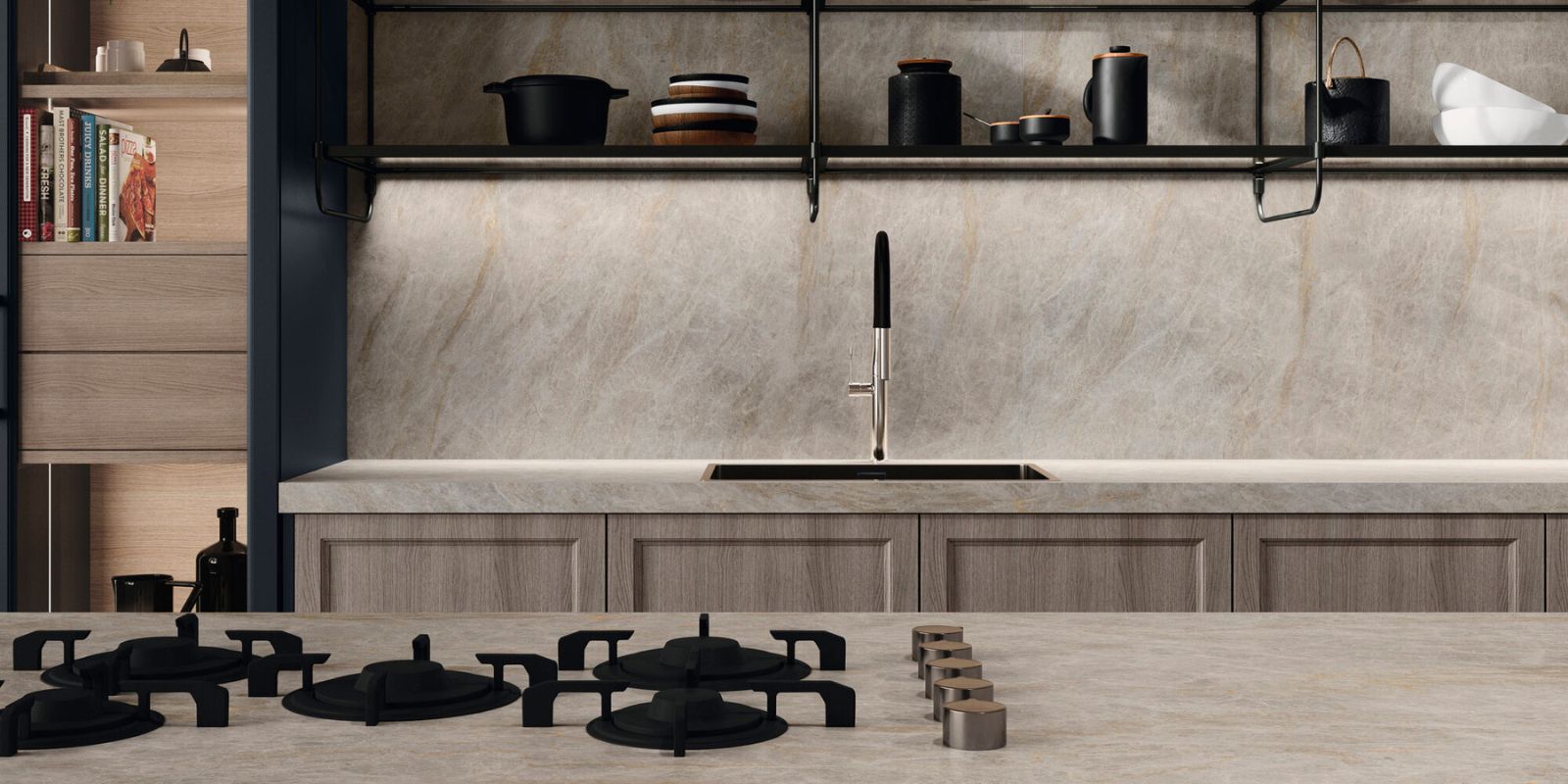
Blue and grey create a versatile palette that evokes rustic comfort when done with muted or stormy tones. This pairing is especially effective for country-style kitchens and classic bathrooms, where the design focus is warmth, tradition, and texture.
Introduce charcoal grey floor tiles with hand-painted blue splashbacks or ceramic metro tiles in a dusty blue. For bathrooms, a slate-effect grey tile with powder blue walls or cabinetry provides timeless appeal with a hint of English heritage.
These tones pair perfectly with natural materials like oak countertops, wicker accessories, and brushed brass fixtures. The blue adds coolness and calm, while grey delivers a grounding backdrop. Incorporating wooden elements such as rustic shelves or a farmhouse-style dining table can further enhance the traditional feel, while woven baskets and linen textiles add softness and texture.
To complete the look, consider adding vintage-inspired lighting fixtures and classic ceramic accessories in complementary colours. This combination not only creates a welcoming and cosy atmosphere but also ensures your kitchen or bathroom will remain stylish and inviting for years to come.
Green evokes freshness, nature, and renewal, making it a perfect accent for functional spaces that benefit from a calm, healthy atmosphere. Pairing bright or leafy greens with white and grey creates a high-impact yet balanced aesthetic.
In bathrooms, try leaf-green tiles as a feature wall paired with light grey porcelain floors and white gloss fixtures. In kitchens, use sage or forest green cabinetry against white marble-look splashbacks and dove-grey tiled floors.
This colour combination shifts seamlessly between classic and contemporary styles, depending on the tone of green used. Mint and pistachio are light and playful, while olive and emerald feel grounded and opulent.
When working with greens, it’s important to consider the lighting in your kitchen or bathroom. Natural light enhances the vibrancy of green tones, making the space feel fresh and invigorated. In rooms with limited natural light, opt for lighter greens like mint or pistachio to maintain brightness. Conversely, deeper greens like forest or emerald can add drama and sophistication when paired with ample lighting and reflective surfaces.
To complete the palette, consider complementary colours such as warm yellows or soft oranges in accessories like towels, rugs, or artwork. These accents introduce energy and contrast, enhancing the overall harmony of the kitchen or bathroom colour scheme. Metallic accents in brushed brass or copper also pair beautifully with green tones, adding a touch of luxury and warmth.
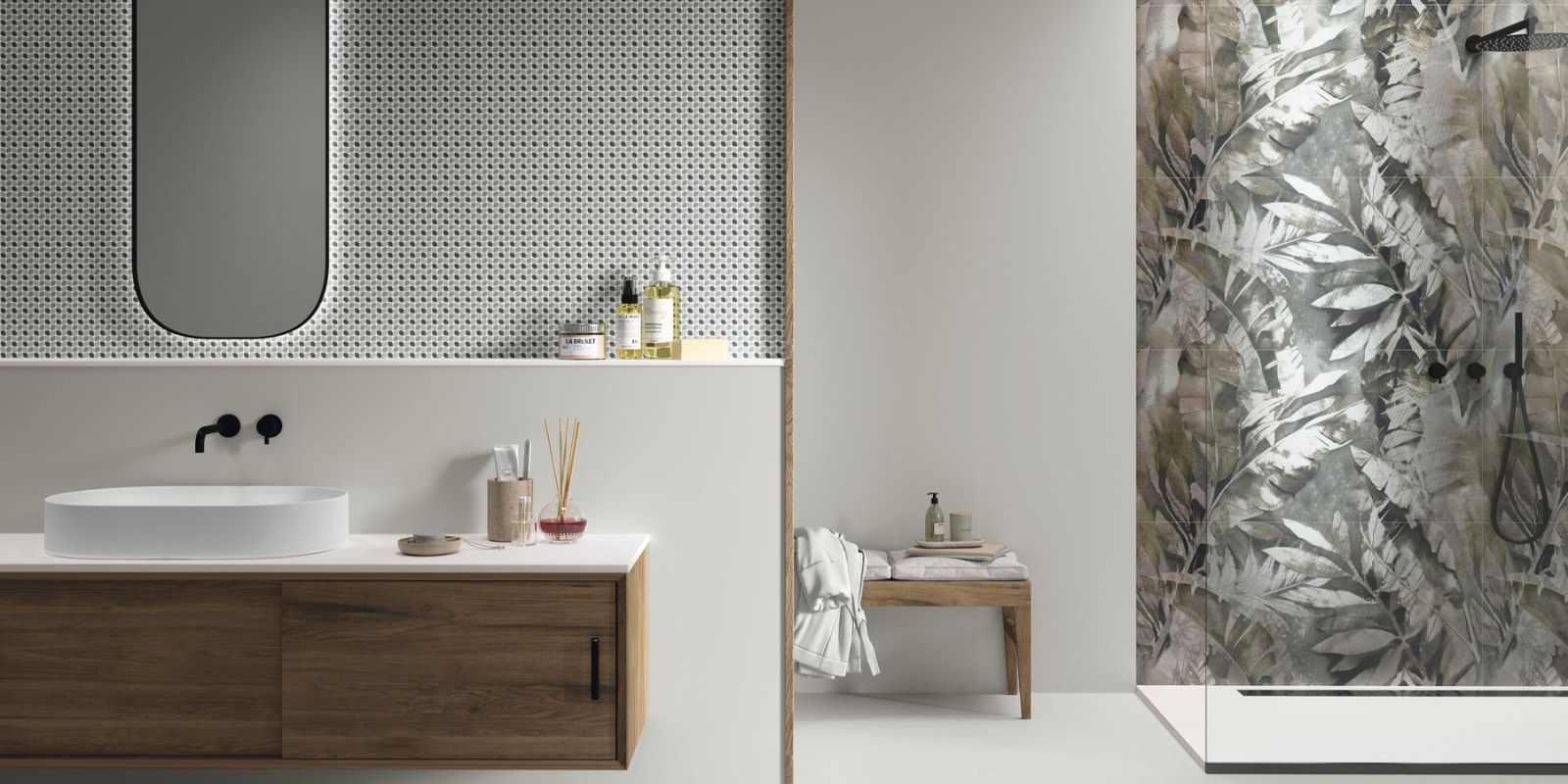
Not all impactful kitchens or bathrooms require bold contrasts. Cream, beige, and taupe tones create a serene and timeless atmosphere that’s perfect for larger tiles and minimalist design. These tones work especially well in open-plan spaces where you want a unified flow between kitchen and dining zones.
Use warm beige porcelain tiles with subtle marbling to mimic the look of natural limestone. These tones blend seamlessly with wooden cabinetry, gold accents, or tactile wall cladding for a spa-inspired bathroom or Tuscan-style kitchen.
For those with a flair for the dramatic, high-contrast colour schemes make an immediate impact. Black and white is a perennial favourite in luxury bathrooms and modern kitchens. Large black slate-effect tiles on the floor paired with white gloss cabinets and chrome fittings provide a crisp, architectural look.
Similarly, navy blue tiles or cabinets paired with brass or gold finishes exude richness and sophistication. Complement this look with white marble-effect tiles or subtle terrazzo flooring to balance the palette.
Pastels are growing in popularity for bathroom design especially in powder rooms or smaller ensuites where playful, unexpected touches are welcome. Try blush pink metro tiles with white grout and soft grey floors for a gentle, modern twist on the classic monochrome.
Powder blue or pale lavender can be used as feature walls or floor tile inlays, especially when balanced with white ceramics and matte metallic fixtures like brushed nickel.
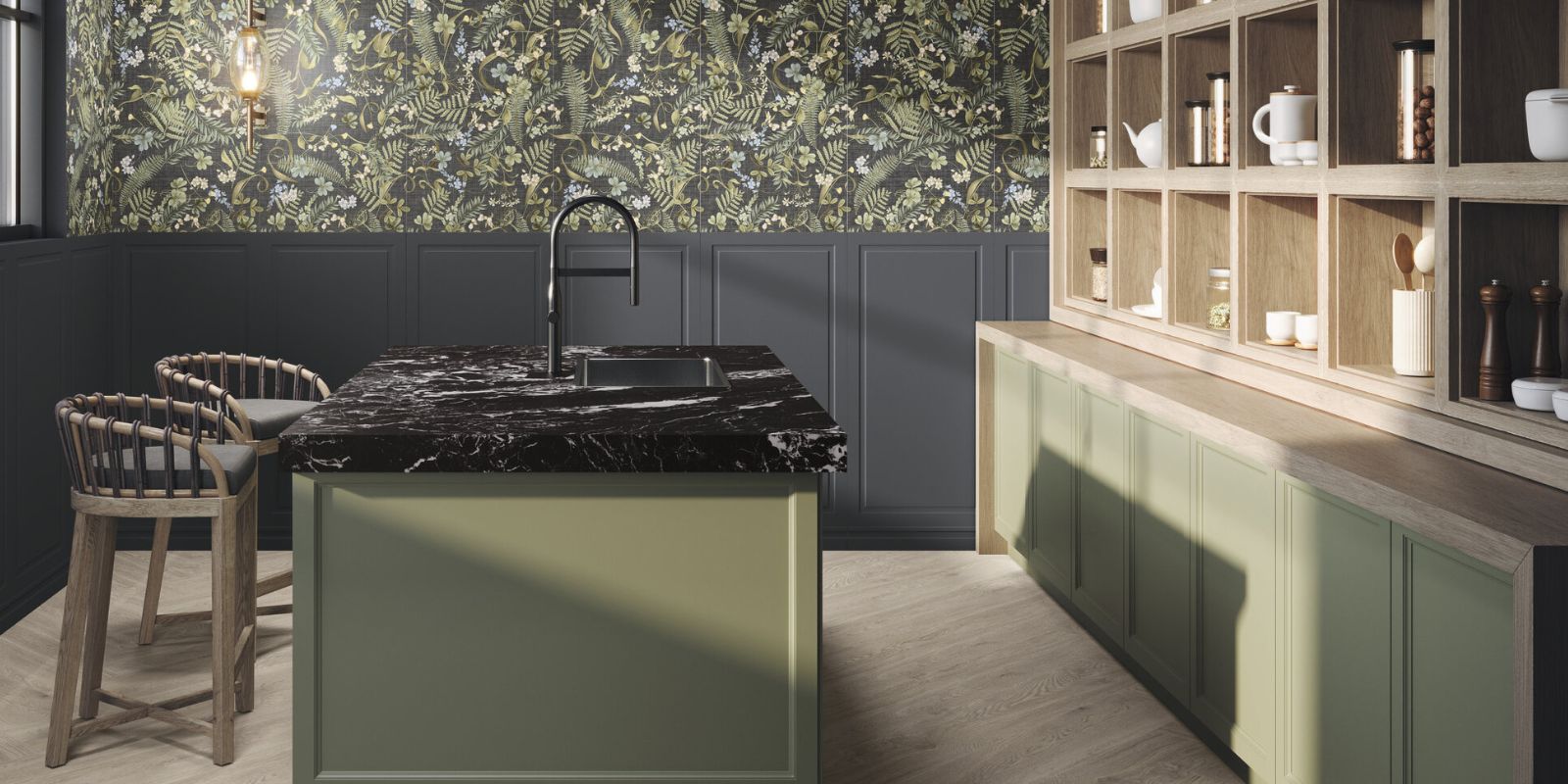
When it comes to small bathrooms, the right colour scheme can make all the difference in how spacious and inviting the room feels. Opting for bright colours and a monochrome colour scheme, such as pairing white with light grey, can help create the illusion of a larger, more open space. Using the same colour on both the walls and ceilings blurs the boundaries of the room, adding depth and a sense of continuity that visually expands the area. For example, painting bathroom walls and ceilings in a soft grey or crisp white allows natural light to bounce around the space, making it feel airy and uncluttered. This approach is especially effective in small bathrooms where every design choice counts. By thoughtfully selecting colours that reflect light and enhance the room’s proportions, you can transform even the most compact bathrooms into comfortable, stylish retreats.
Choosing a light-enhancing colour palette is a great way to make a small bathroom feel brighter and more spacious. Shades of white, cream, and light grey are perfect choices for reflecting natural light and creating an airy atmosphere. To add character and prevent the space from feeling too clinical, consider introducing a vibrant shade, like a bold blue or a fresh green, as an accent on a feature wall, vanity, or even through accessories such as soap dishes or towels. This pop of colour brings energy and style to the room without overwhelming it. When selecting your bathroom colour scheme, take into account the amount of natural light the space receives and the overall style you want to achieve. By combining a light, reflective base with a carefully chosen accent, you can create a small bathroom that feels both inviting and visually dynamic.
Mon-Fri, 9am-5pm
01772 595995
Roccia Design Centre, Preston,
PR1 4HH
01772 258998
Roccia Tiles & Bathrooms, Bolton, BL1 4JL
01204 846111
| Description |
| Price |
| Vendor |
| Type |
| Product variants |
Delivery is on us when you order over £500
